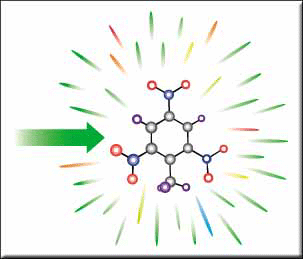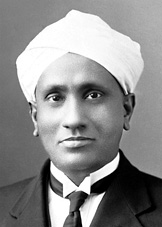
Contents
Raman Spectroscopy and the Analysis of Gemstones

 |
Contents Raman Spectroscopy and the Analysis of Gemstones |
 |
|
~ C. V. Raman ~ 1888-1970  Figure 1: C.V. Raman (13) C.V. Raman (Chandrasekhara Venkata Raman) was one of the most renowned scientists ever produced by India. Born in Southern India, he devoted his educational studies and career to discovering new advancements in the field of physics. He began his experimentation after schooling at Calcutta University, and later transitioned to working at the Indian Institute of Science at Bangalore. After working at Bangalore for fifteen years, the Indian physicist became the director of the Raman Institute of Research at Bangalore. As a student, Raman spent much time and energy researching the topics of optics and acoustics, which would remain the focus of his studies throughout his career. In his early years he focused on studying vibrations and their application into the theory of musical instruments (specifically the violin family), but over time he began to study light. (13) His published work on “Molecular Diffraction of Light” in 1922 ultimately led to his discovery of a new radiation effect which resulted from the changes in the wavelength of scattering monochromatic light. This effect was later named the “Raman effect” or “Raman scattering.”(8) In 1920, Raman was awarded the Nobel Prize in physics for his studies of scattering light, and his discovery of the Raman effect. Following his Nobel recognition, Raman spent almost ten years carrying out experimental and theoretical studies on the diffraction of light by acoustic waves of ultrasonic and hypersonic frequencies, as well as the effects produced by X-rays on infrared vibrations in crystals upon exposure to light. In 1948, he used spectroscopy to study the structural properties of diamonds, and the optical behavior of iridescent substances. Timeline of CV Raman’s Major Accomplishments (13): -1904 – Earned a B.A. in physics from the Presidency College in Madras -1907 – Earned his M.A. in physics -1917 – Palit Chair of Physics at Calcutta University -1919 - Honorary Secretary for experimental research in the laboratory of the Indian Association for the Cultivation of Science at Calcutta -1922 – Published work on “Molecular Diffraction of Light” -1926 – Founder and editor of the Indian Journal of Physics -1928 – discovery of a new radiation effect, later name the “Raman effect” -1929 – Knighted by the British empire for his advancements in the field of physics after being elected into the Royal Society of London in 1924 -1930 – Received the Nobel Prize in physics for his discovery of the Raman effect -1933-1948 – Professor at the Indian Institute of Science at Bangalore -1948 - 1970 – Director of the Raman Institute of Research at Bangalore "C.V. Raman was a great teacher. His knowledge was not confined to physical sciences. In this over - specialized world his breadth of knowledge was remarkable. He combined the highest intellectual integrity with a winning warmth of heart… He was the most illustrious scientist who continued for many years to guide the scientific program of India." -Dr. Rodhakrishnan, President of India 1962-1967 (18) |